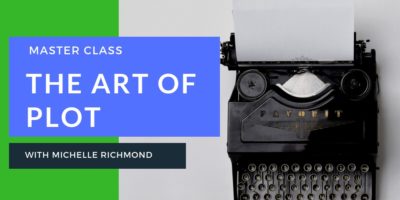How to plot a novel
When I wrote my first novel, I thought I knew what I was doing. I’d just returned from three months solo in China, and my experiences had been so life-changing, I felt they could form the basis of a novel. I’d also recently published my first story collection, a novel in stories that had been well-reviewed. I’d dropped out of one MFA program and happily completed another, and had taught creative writing at the college level. I had a lot of memories of China, and of the Southern landscape of my childhood, swimming in my head, and I believed the associations between these two places, tied together by the right character, would make an interesting premise for a novel.
I knew how to write, and I had something I wanted to say, so I figured I was ready. As it turns out, I wasn’t really ready at all. As much as I knew about characterization and setting, as much as I felt comfortable in my writing voice, I had no idea how to plot a novel.
“A plot demands intelligence and memory also,” E.M. Forster wrote. “Memory and intelligence are closely connected, for unless we remember we cannot understand.”
Memory? Yes, I had that. And maybe a little intelligence (although not nearly so much as I probably thought I had back then). But what I was lacking was the very particular skill set for plotting a novel. In my MFA program, I’d concentrated on stories. The workshops were geared entirely toward short fiction, and even if they hadn’t been, I have my doubts that an MFA workshop is a healthy environment for a novel-in-progress. It’s one thing to have twelve different students picking away at your short story, quite another to have them dismantling your novel scene by scene.
So I set out to write my novel pretty much in the dark. And I did write it, and it was published. The reviews were mixed: some great, some terrible. One reviewer for a major publication reduced me to tears by calling it “a bleak melodrama,” while the reviewer for a competing publication called it “finely crafted and compelling,” albeit “crowded,” as “issues of love, loyalty, prejudice, history, passion, and compassion elbow each other for space on each page.” I had to face the reality that, in my first novel, there might simply be too much going on.
I’d made the mistake so many first-time novelists make. I wasn’t sure I’d have another chance, so I tried to fit everything in. If there’s one thing I can tell you that will save you time and headache, it’s this: not everything will fit. Make like Tim Gunn, and edit. Choose your subject wisely, and then do the hard work of reining it in.
This is a lesson I struggle with anew with each novel (I’ve published three more since then, with another on the way this summer). I spend a lot of time writing into oblivion, and an equal amount of time getting the plot back on track. It’s a push-pull, and both parts are necessary.
You must write the expendable sentences, the sentences you won’t keep, in order to get to the essential ones.
Want to go in depth? Join my novel writing master class, Plotting the Novel, for eight practical, information-packed weeks on how to plot and structure your novel. Go here to learn more.

